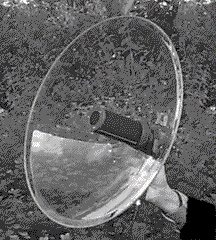Topic: Microphones for recording
Does anyone have any suggestions for microphones? Primarily from the players perspective? Also how many? Settings?
Thanks
Does anyone have any suggestions for microphones? Primarily from the players perspective? Also how many? Settings?
Thanks
I realise I am very late for this post. I assume you mean recording a real acoustic piano and not Pianotq here?!
This is also a VERY long and subjective subject which is even more vague without discussing the budget available for microphones/mic preamps/compressors/reverbs etc
If we just focus on the microphones and try and keep the budget down I can report that I just recorded a major release which involves just voice and piano.
For that I used two SE4400, which are budget copies of the famous AKG C414 in an M/S arrangement which worked superbly.
I simultaneously had two SE1's in an XY arrangement for some extra 'width' and an EV R70 at the bass strings to make the Bechstein M (1.8 meter) sound a bit bigger than it really is.
But in the end the M/S pair did almost all of the work.
I've also tried Neumann TLM 103's as XY - personally I liked this very much but for broadcast it's not very mono compatible but as the pianist it was very pleasing.
I've heard very good things about the Earthworks piano mikes but I've never used them.
Lastly - this really is down to personal taste and dependant on the style of music/room/piano that it's almost a thread without end! :-)
Maybe better just to use Pianoteq ;-)
There are already so many microfones and adjustment... Such richness of interation and tweakability...
More than that ???
Only if we take the actual tendency for crazy conspirary theories, and requested a parabolic microphone a 1/2mile distant, to allow feel like we would be spied by FBI while playing:

In the real world I've made just dozens (no, many more!) of classical recordings with an ORTF setup (a pair of cardioid mics, angled 110°, and 17 cm between capsules, see here: https://en.wikipedia.org/wiki/ORTF_stereo_technique). Sometimes I'd add a few other mics if needed, but never when recording a solo piano. This being said, the positioning of the mics is of the utmost importance, normally it's the "best" listener perspective, sometimes further away, or more to the left or the right, depending of the instrument and the room, but it's always a good starting point. In PTQ, choose U87-cardio or C414-cardio in the models, you can't be wrong. And you'll be amazed by how much it will modifiy the sound.
This only applies to "classical" music of course, where the goal is to take a "snapshot" of what's being played, where, and how.
If it's jazz or pop, creativity is the norm, just do whatever gives a good result.
It would be a nice addition in the mic placement window if PianoteQ could reverse the phase of a mic (currently I do it on my mixing desk).
Then users could replicate an M/S arrangement purely within the program by reversing the phase on one side of a fig 8 mic pattern sent to two outputs.
It would also help a lot of headphone users who report phasing issues.
It would be a nice addition in the mic placement window if PianoteQ could reverse the phase of a mic (currently I do it on my mixing desk).
Then users could replicate an M/S arrangement purely within the program by reversing the phase on one side of a fig 8 mic pattern sent to two outputs.It would also help a lot of headphone users who report phasing issues.
You can already. Double-click on the mic volume in the sound recording tab and it will turn red reversing the phase of the mic.
Ah brilliant! Thanks for that Chopin87!
Those Modartt people seem to have thought of everything….